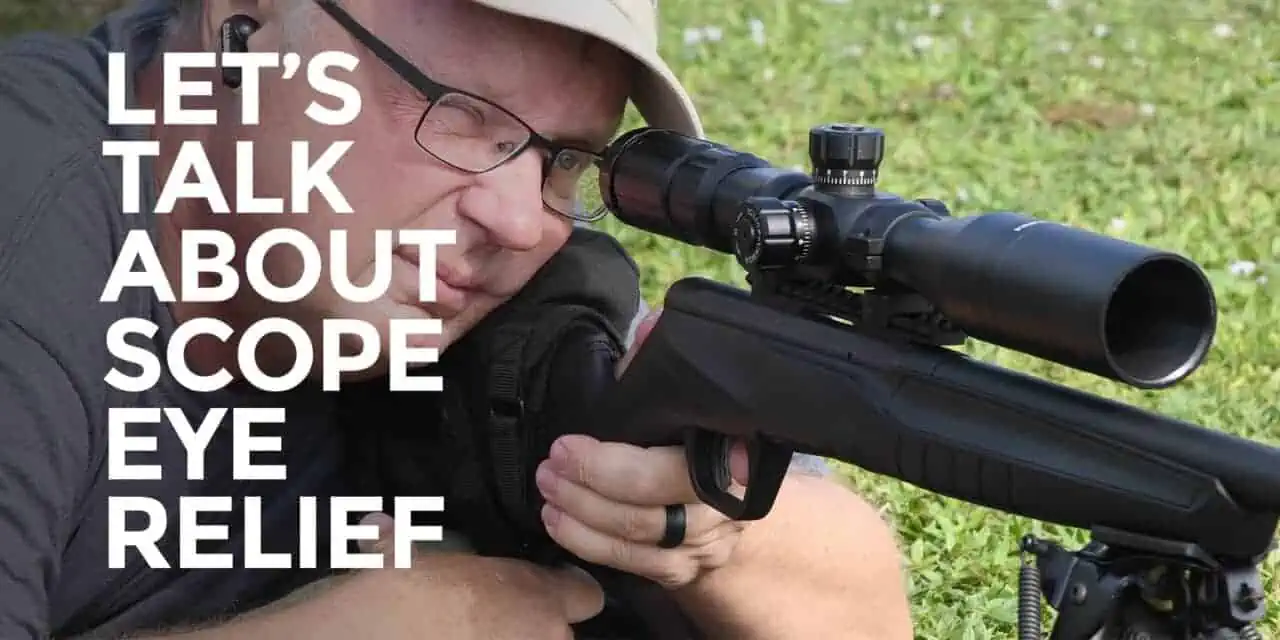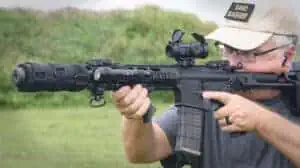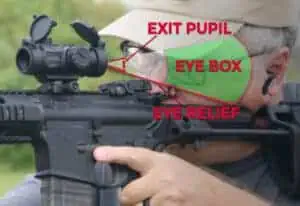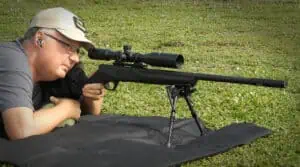Scoping Out Scope Eye Relief
I often shoot at a public rifle range near me, and it’s quite common for me to see other shooters there struggling with their scoped rifles. They’ll adjust their shooting position and crane their necks to get a good sight picture through their scope. It’s common to see them fiddle with the focus knob and do other adjustments, trying to get the scope set up to their liking. They’ll finally fire a shot, and they get frustrated as the round landed nowhere near where they thought it would. Let’s talk about the problems of scope eye relief, eye box and overscoping. These are the things responsible for frustrating range outings like the one I just described.
Just What Is Scope Eye Relief, Anyways?
Simply put, scope eye relief is the distance between the pupil of your eye and the rear lens of your scope. Scopes with longer eye relief, such as handgun scopes or the traditional scout scope can be mounted further forward on the gun. Scope eye relief, we should note, is not the same as eye box (we’ll get to that later). Rather, eye relief is the forward and back range you have behind your scope so you can see the reticle and the target without any cutoff.
Eye relief is inversely proportional to field of view. Field of view is how much of the area around the target you can see through your scope. Field of view is a function of the optics inside the scope. It can vary between scopes of the same magnification and lens size. Scopes with a wide field of view, such as the Trijicon ACOG, tend to have short eye relief distances. This, in turn, means they need to be mounted further back on your rifle, and your eye needs to be within a smaller range of distances than a scope with a narrow field of view.
Exit (Pupil) Questions
Before we move on to talk about eye box, let’s pause for a moment and talk about exit pupil. Exit pupil is the size of the image on the rear lens of your scope. It’s calculated by dividing the diameter of the objective lens (the one up front) by the power of your scope. For instance, a scope with a 36mm objective lens at 6 power would have a 6mm exit pupil. Crank that scope up to 12 power, though, and that exit pupil shrinks to 3mm. Now let’s put this newfound knowledge together with scope eye relief and show you how it affects what you see on the range or in the field.
If you’ve ever placed your eye behind your scope and seen the edges start to darken, or had to wiggle your head around so you’re seeing the whole reticle, you’ve experienced how a small exit pupil combined with a short eye relief distance can create a small eye box behind the rear lens of your scope.
Eye Box: It’s What Behind That Counts
Eye box is best described as the total area behind the trigger of your gun where you can clearly see the image without any shading on the edges. An eye box isn’t really a box, though. Rather, it’s a cone-shaped area behind the scope where you can see the entire reticle and there is no shading or fade to black around the edges. The length of this cone is controlled by the scope eye relief. The diameter of the cone is controlled by the exit pupil. Inside of this area is the sweet spot where everything you see inside your scope is crisp and clear. You’ll have all the information you need to make the shot.
Remember, though, exit pupil is a function of the objective lens and the magnification. If you increase the power of your scope, your eye box is going to shrink. At higher magnifications, this means the eye box can get quite small. This results in a very small area behind the stock where you have a clear view through your scope. If you’ve ever wondered why precision rifles have stocks you can fine-tune to the individual shooter, now you know.
Scoping Out The Experts
In order to get a better idea of how all this works together for the American gun owner, I reached out to Michael Branson, Product Marketing Director at Swampfox Optics. “Everything about choosing an optic is different from one person to the next,” Branson said. “The shape of your face, for instance, can affect how you position your cheek on the stock. This, in turn, can affect where you position your scope on your rifle and how high it will be over the stock. Everything about your optic works together, so when shopping for a scope, don’t fixate on one feature over another. Instead, consider how everything works together to deliver the best experience behind the glass.”
“Take a good look at what you really need from your optic,” Branson continued. “There’s a lot of people who believe that a higher magnification on their scope will make up for their lack of basic rifle technique. We call this ‘overscoping,’ and if anything, it makes bad technique even worse. At higher powers, you’re going to have more wobble in shot, along with longer target acquisition times.”
Finding The Right Scope Eye Relief Takes Time
“If you’re at too high of a magnification, you’re also going to run into problems with how the scope itself works,” Branson said. “There will be less adjustment in the turrets. It’s also quite easy to zoom past the markings on your reticle. Your field of view really narrows at higher magnifications. That, in turn, cuts off the outer edges of the reticle markings inside your optic. If that happens, you’ll either have to zoom back out to where they appear, or adjust your aim by using your windage and elevation dials, which is slower and is more prone to error.”
Scope eye relief is just one of the things to consider when buying an optic. Every feature of a rifle scope, be it a 1 power prism optic or a high-power telescopic sight, affects the other functions of the scope. It’s up to each of us to consider our shooting ability. Then, consider what our purpose for the optic will be and finally, shop accordingly. Remember, no amount of high-priced, brand name optic is going to make up for a lack of basic marksmanship skills. Train accordingly.





